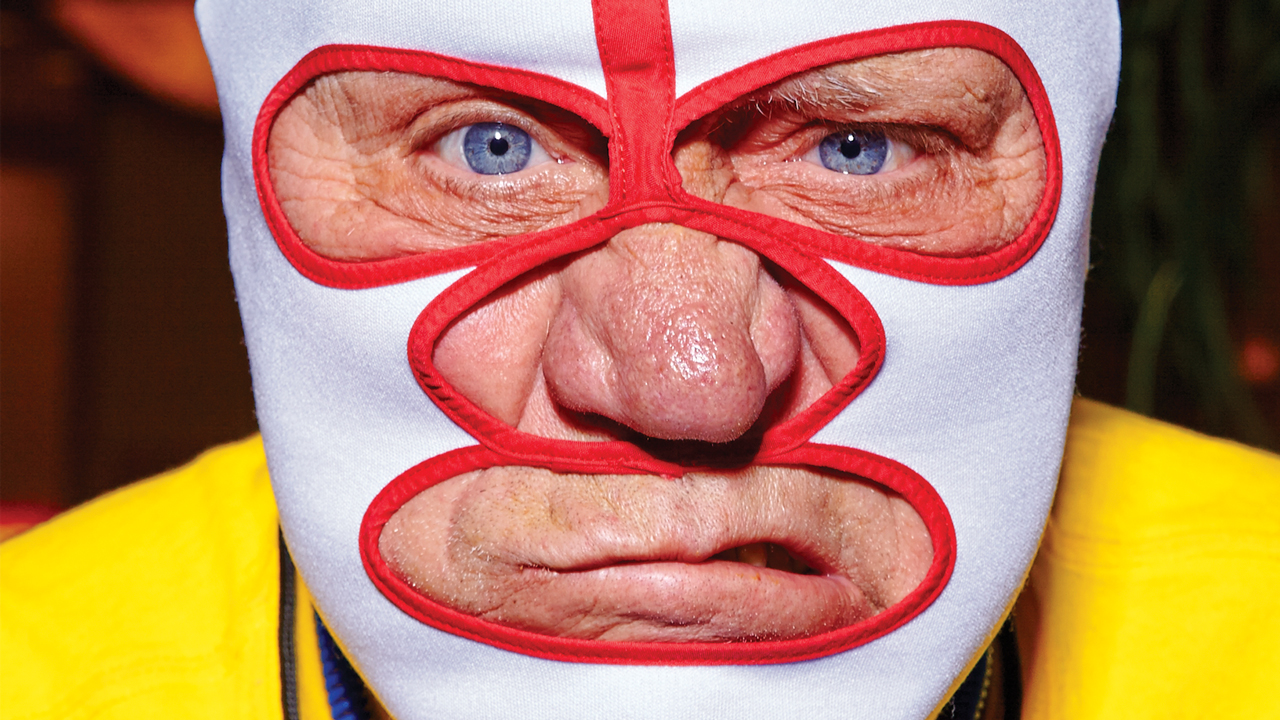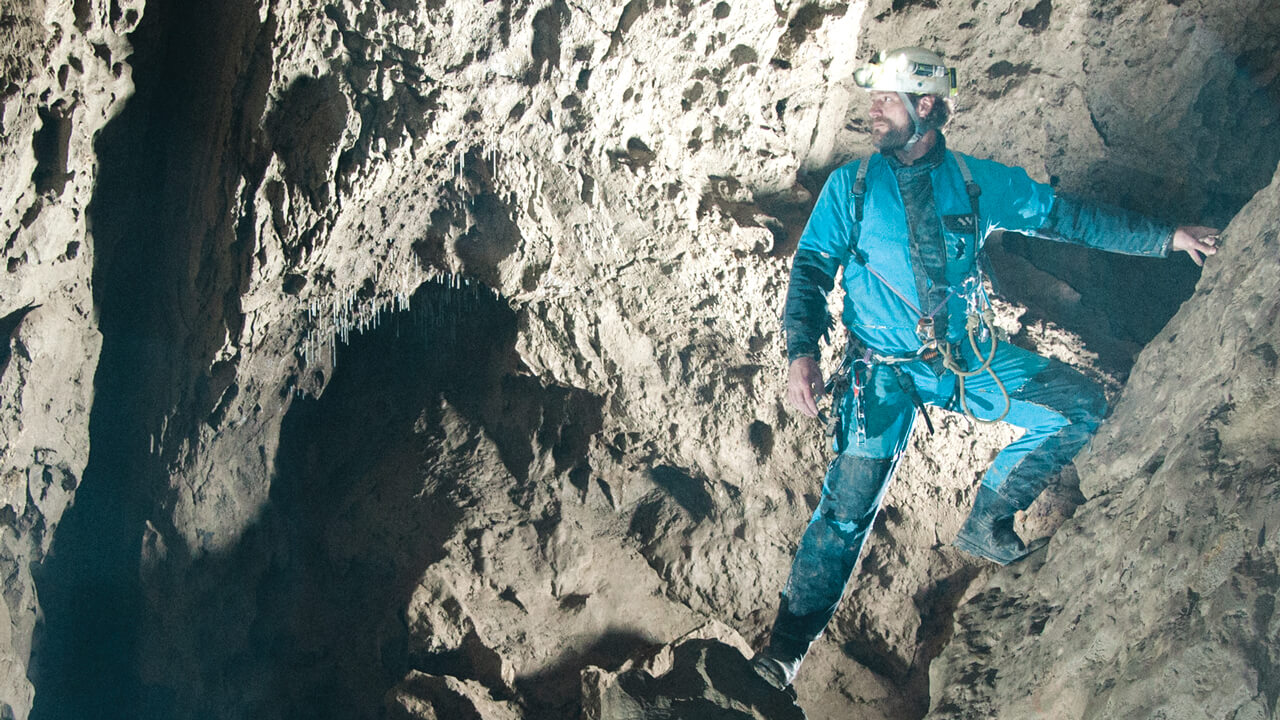The sweat dripping off Kane Waselenchuk’s head and face has accumulated in a substantial pool by his purple and white Nike Air Max sneakers. Sitting just outside the glass-walled court known as the Fish Bowl, Waselenchuk stares straight ahead, focused on the task at hand. He gives his calloused hands a break, resting his racquet on his bag. The Edmonton-born man they call The King is in uncharted waters, and not the positive kind from his standpoint. He’s about to start a semi-final tiebreaker against Andree Parrilla, a 22-year-old who, until today, had never taken a single game off of him.
He puts on a fresh black headband and walks back into the court, followed by Parrilla. More than 150 people are crowded around the main court here at Synergy Fitness Club in Syosset, N.Y., to watch this match. Dozens of others have a great overhead view of the court — like a man doing ab exercises on the second floor of the club — but pay no attention to the two world-class racquetball players playing on it.
An ace gets Waselenchuk on the board first. He nails a winner off the side and front walls. He fires a forehand to un-gettable territory. Another ace follows, then a backhand to the corner that Parrilla can’t reach. While both players showed signs of nerves and frustration in the first two games of the match, Waselenchuk now manoeuvres around the court like a swagger-filled cheetah, and Parrilla, the world No. 4 from Mexico, slumps his shoulders like he knows his fate.
It’s all over in 10 minutes. After a forehand winner down the line to seal it, Waselenchuk yells “Yeah!” and pumps his fist. He wins this tiebreaker without relinquishing a single point, 11–0. Mission accomplished: He’s into the final of the International Racquetball Tour’s (IRT) season-ending event, the Syosset Open.
After a few hugs and high-fives, Waselenchuk drops heavily into his plastic courtside seat with an exhale, an exasperated grin on his sweaty, tan face. The 37-year-old is one win away from pro title No. 116, and from locking up the World No. 1 ranking at season’s end for a record 13th time. But his rest and self-reflection lasts only a minute before fans approach armed with Sharpies and iPhones. One asks: “Can I get a photo, King?”
This is the #WorldsFastestSport, or so says the IRT. You can debate that claim — Jai Alai probably should, with its fastest-recorded whack clocking 204 mph, compared to racquetball’s 191 mph. But here’s what you can’t argue: Waselenchuk is the greatest racquetball player of all time. Forget opinions and the good old days — it’s a fact. In the past decade, he has lost just three times. The lefty owns 26 more pro singles titles than the next-winningest player in history, Mexico’s Paola Longoria on the women’s side, and 45 more than the next-winningest man. Stacked up against the great men of tennis, Waselenchuk has six more singles titles than Jimmy Connors and 15 more than Roger Federer. Waselenchuk won 134 matches in a row between 2009 and 2012. The US Open is the only major in his sport, and he has won it 14 times — 10 more than anybody else. Racquetball stats have been compiled for more than 35 years, and there isn’t one major benchmark that he doesn’t own. He’s not shy about that, either. “I would say Tiger Woods is great,” Waselenchuk says, “but Tiger Woods doesn’t have anything on me.” It sounds arrogant as hell, but when it comes to sheer dominance of his opponents, he has a point.
And yet, this is probably the first you’ve heard of Kane Waselenchuk. (Applause for you if that isn’t true.) He is the best unknown athlete of his generation, writing a history few are reading. Dominant, yet damn near invisible. An anonymous champion. And this is despite the fact Waselenchuk has been more newsworthy than anyone in the sport’s modern history: He was, for a time, racquetball’s Bad Boy, banned from its courts. He hasn’t represented his country for more than a decade, but swears he’d like to. “It just sucks, because I could be the greatest Canadian athlete no one’s ever heard of,” he says. Quiet for years about the frustration of playing in near obscurity and about the changes he’d like to see in his sport, Waselenchuk is choosing to speak up now because the future of racquetball may depend on it — and he has a heck of a lot more winning to do, too.
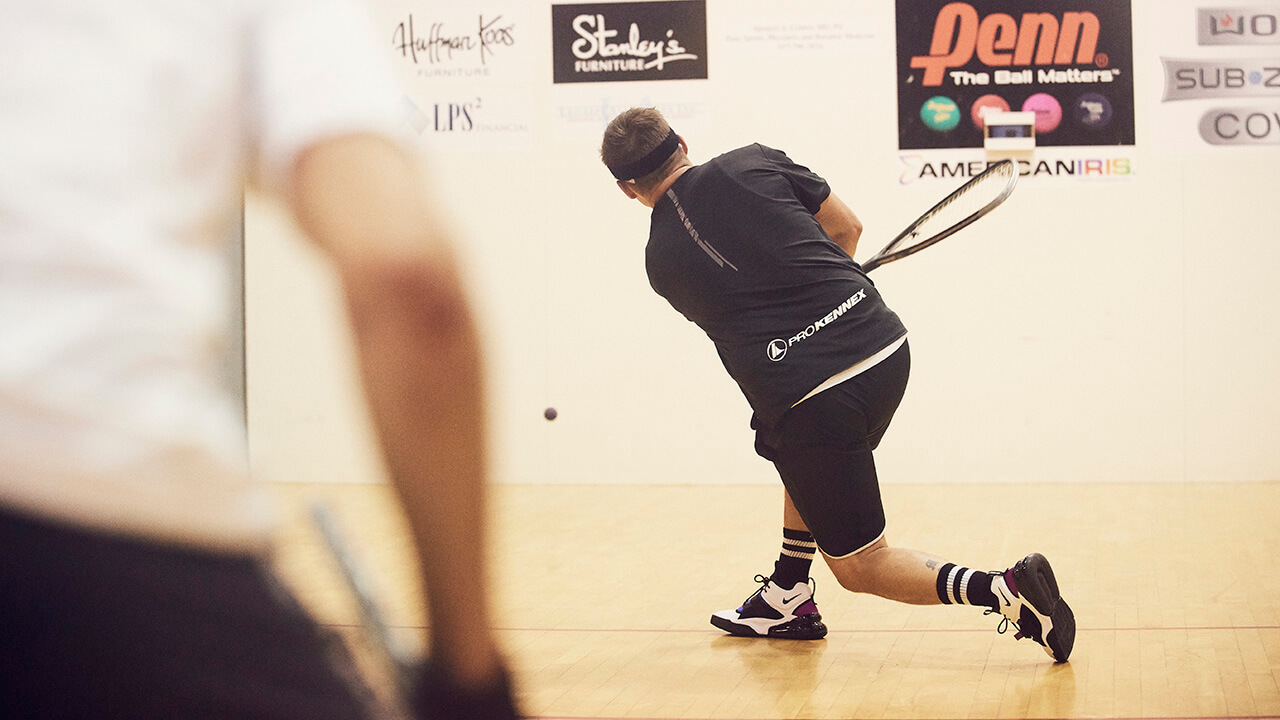
Here’s the thing about racquetball: It used to be big. In the 1970s and early 1980s, Marty Hogan was the dominant player on the men’s side, and he had a $1-million sponsorship deal with Catalina Sportswear and a shoe contract with Nike. Even local tournaments drew fans by the hundreds, and people attended racquetball-tournament banquets just to socialize. But then came the fitness boom in the latter half of the ’80s, which saw a lot of courts transformed into studios, and racquetball began to fade. Still, it had far more of a presence in Canada in the 1990s than today. That decade, Winnipeg’s Sherman Greenfeld, a two-time world champion, was twice voted Manitoba’s male athlete of the year, beating out Jets and Blue Bombers. Today, while racquetball is incredibly popular in places like Bolivia (second only to soccer) and Mexico, the same can’t be said of its presence in the U.S. and Canada. When Waselenchuk explains what he does for a living, the popular response is: “Oh, I’ve never heard of that.” He usually hits back with: “Well, you probably never will again.” And then inevitably he answers questions about the rules of racquetball.
Quickly, the Xs and Os: Racquetball is played on a rectangular court that’s bigger than squash’s, with all walls and the ceiling in play, and a bigger and bouncier ball than squash. Points are replayed if one player hinders the other’s ability to get to or hit the ball. The serve is huge as that’s where you get your points — standing in a service box, putting the ball in play by hitting it beyond a service line. On the pro men’s tour, matches are a best-of-three: The first two games to 15, the tiebreaker to 11. When it comes to paying the bills, about 10 players on the men’s side make a living playing racquetball, and mostly from sponsorship dollars. When he won the biggest tournament in racquetball late last year, Waselenchuk earned $6,600.
When he was little, though, the sport was still at its height and relatively lucrative. Waselenchuk was two years old when he started playing, using a two-litre pop bottle to smack the ball around on weekends with his dad at Sports Connection, the racquetball club near their Edmonton home. He got his first non–Coke bottle racquet — a red-and-black Voit, the grip shaved down so he could get a hand around it — at two and a half. Right from the age of three, Waselenchuk played against adults, first for fun and then in actual matches. The stories of his early playing days sound like fables: Sitting in his grandparents’ basement at age five, hitting the ball into the corners to help develop his touch. Winning his first tournament at five or six, taking the women’s C Division against ladies who cooed at the cute young kid until they realized he could play. At eight, he won his first national title, the boys’ under-14 doubles, and nearly claimed the under-10 singles, too, finishing second.
By necessity, Waselenchuk played unlike anyone else. That’s in part because he’s self-taught and never had a coach as a kid, and in part because he honed his game while child-sized. “Because he was so small, he would scale the walls to get balls,” his mom, Denise Popal, explains. “If the ball was over his head, he’d jump up the wall, like Spider-Man. When you see him shoot between his legs or backwards, he’s been doing that since he was a kid. He had to figure out a way to get that ball back when he was six or seven, and only so tall.”
Now five-foot-10 and with the look of a pro athlete, complete with jacked arms and tattoos, Waselenchuk has also maintained a healthy dose of confidence since his early playing days. At 16, he went to Canadian senior nationals for the first time, ranked “probably last,” he says. That didn’t stop him from telling Team Canada head coach Ron Brown, “I’m going to win this tournament.” Brown doubted that, and for good reason, because the field was headlined by Greenfeld, the defending world champion.
But Waselenchuk made good on his Babe Ruth–like called shot, beating Greenfeld in the final to become Canada’s youngest-ever national racquetball champion. “You think every player has a weakness, but I honestly don’t think he did,” says Greenfeld, who’s now retired from the sport. “No matter what you did, he could combat it. He had the speed, the power. He was left-handed. He had the finesse. He was able to adapt to any opponent — control game or power game.” Waselenchuk’s trademark confidence played a role, too. “He probably has never had a thought that someone was better than him,” Greenfeld says. “That creates intimidation. You’re out there playing hard and he’s making it seem like you’re in the backyard playground and he’s on the pro tour.”
Brown knew from the moment Waselenchuk won that 1999 national title that the kid was the future of the sport — and not just in Canada. “I realized if he continues on this trajectory, he’ll be the best player racquetball has ever seen,” he says.
From that first senior national title, Waselenchuk was all in on racquetball. He gave up his favourite sport, hockey, and the chance at a potential walk-on tryout with the Oilers that a neighbour who worked for the team had promised to set up. Waselenchuk played AAA and had NHL dreams, but because he’d been named to Team Canada for racquetball, which came with a yearly sum of $30,000 for a carded athlete, the choice was made. The few tournaments he had been attending were thanks to his grandparents footing the bill, and his family didn’t have much. His father, Darren, drove trucks, and later worked for a company that put up billboards. “I was [suddenly] making more money than my dad,” Waselenchuk says. “I felt like, man, this is a way that I can help out.”
If hockey had given him his first paycheque, Waselenchuk says he would’ve stuck with that. But it was racquetball that paid. “I felt like it was something that, if I chose this path, I could change all of our lives — not just myself and make myself better and all that,” he says. “I felt like I could make an immediate impact on our family.”
At 19, by then a three-time national champion, he moved to Austin, Texas, with $1,000 in his bank account and all his clothes stuffed in a duffel bag to pursue a full-time career as a pro. Only a handful of players made a living, and Waselenchuk was determined to be one of them. “I wanted to see what I could do with the best players in the world,” he says, sitting in an empty basketball court after his quarter-final win in Syosset, hands in his lap, Nike sneakers with salmon-coloured accents on his feet. “I wanted to be the best player. That’s it. Period.”
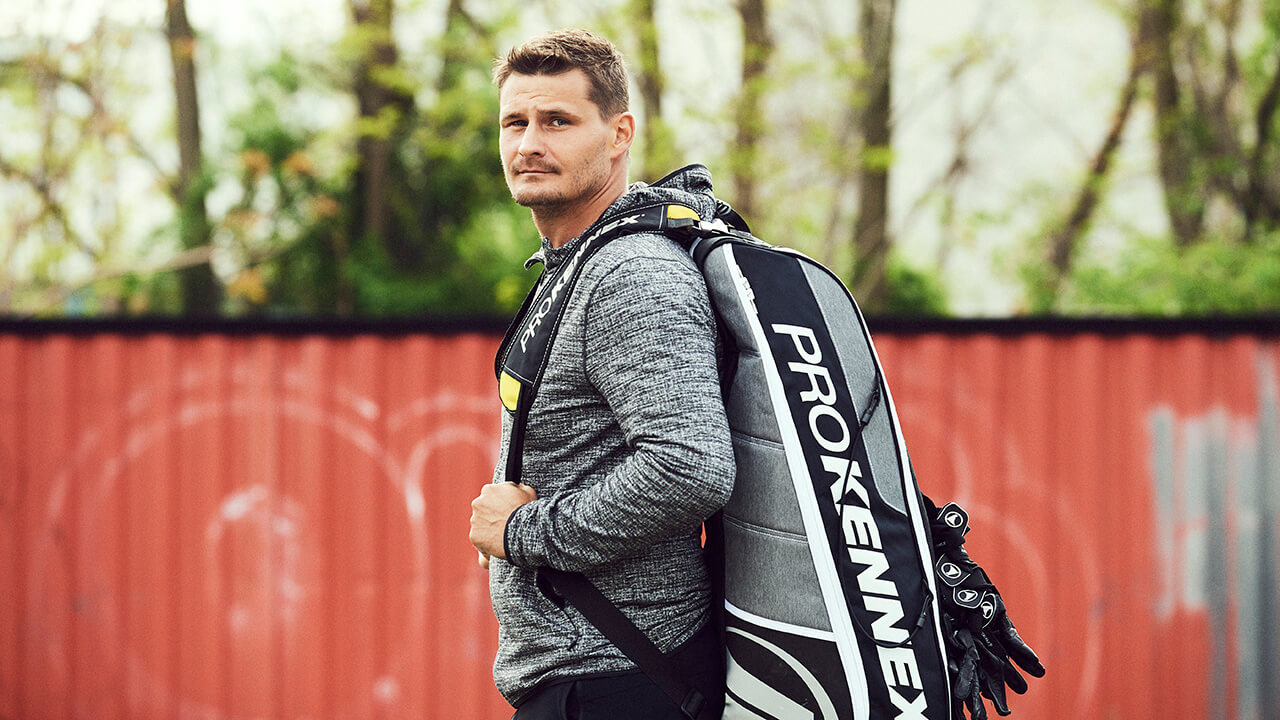
Dressed in his championship-Sunday pink — Tiger wears red, Kane wears pink — Waselenchuk fires some easy forehands at the front wall, warming up ahead of the tournament’s afternoon final. He’s playing a familiar foe in World No. 2, Rocky Carson. The winner today will earn not only the title and prize money totalling $3,600, but he’ll spend his off-season as the World No. 1 — pro racquetball’s highest distinction.
It’s Carson who wins the coin toss and right to first serve. The American scores a quick point, then another on a mishit Waselenchuk forehand. Right away it’s 2–0.
The easiest way to measure an athlete’s dominance is to compare him to the next-best in his sport in the same era. For Waselenchuk, that’s Carson. The pair have been going toe-to-toe for nearly two decades. It was Carson who finished last season as World No. 1, ending Waselenchuk’s streak in the top spot at nine years, after a partially torn MCL kept The King on the shelf for four months. Carson is formidable: He hasn’t been ranked outside the top three since 2005–06 and he spent seven straight years as the No. 2 to Waselenchuk. But this rivalry is wildly one-sided. Carson is 3-76 against Waselenchuk, lifetime. And two of those victories came when Waselenchuk had to retire due to injury.
Still, Waselenchuk has been able to stay injury-free for much of his career, which first hit its height in 2003-04, when he finished No. 1 at season’s end for the first time at the age of 22. That’s also when he decided to enlist the help of a coach for the first time. “My game was going to have to get better to stay there,” Waselenchuk explains.
Long-time coach Jim Winterton thought it was a joke when Waselenchuk first asked him. They spoke over the phone later, to make sure they were on the same page. “How good do you think you could be?” Winterton asked, with an idea of his own in mind. “I don’t know you that well and I don’t want to come off as cocky or conceited,” Waselenchuk answered, “but I think I can be the greatest that ever played the game.” Winterton had written down on a piece of paper: “The greatest player that ever played.” They were on the same page.
The first thing Winterton noticed when he began coaching Waselenchuk was the crowd reaction. Fans didn’t cheer when they saw him hit winners or fire shots between his legs — they gasped. “They just couldn’t believe what they saw,” Winterton says, imitating that gasp with one of his own. “And neither could I.”
For the uninitiated, Waselenchuk’s skill might go a little unnoticed, because he makes the game look so easy. He says there are no low-probability shots for him, and that’s because “he’s changed the percentages of the game,” Winterton explains. “When he gets trapped, he escapes by creating different shots.”
Waselenchuk noticed early on in his pro career that the game was all power, so he reacted, and not only by hitting harder than everyone else. “Everything was kind of high intensity — bang, bang, bang,” he explains. “I could take a ball that was going 150 miles an hour and I could take 120 off of it and touch it in the corner.”
Carson had just won his Syosset semi-final to book a rematch against Waselenchuk in the final when he tried to explain his rival’s skill, in between orange slices. “He’s like a Federer, but with a bigger serve and bigger forehand, hitting the ball that much harder than everybody else,” Carson says. “The guy’s a freak of nature.”
You can go in with a game plan to beat Waselenchuk, and you’ll lose, Carson says. “There are things I can do in some games that are almost going to guarantee me wins,” he explains. “Against him, that may not be useful at all. You can find yourself on the bad end of a rally even when you did everything exactly the way you wanted to.” And yes, that’s incredibly frustrating, Carson says. So much so that Waselenchuk has driven players into early retirement. “I’ve seen a lot of guys who don’t have the heart to keep fighting. They’re going onto the court thinking, ‘Why am I even here?’ or ‘I wish I wasn’t here.’”
The World No. 2 has never allowed himself to go there, though it hasn’t been easy. “It’s a tough thing for me. The wins I’ve had are few and far between,” he says. “You want to be able to go in there thinking, ‘I’ve got this. Just as easy as he could win it, I could win it.’ And that’s what I go in thinking every time — I don’t want to change that. But then he starts hitting shots and it’s like, ‘Wow.’ And you’ve just got to tip your hat to him because he’s that great of a player.”
There is no doubt in Carson’s mind that Waselenchuk will go down as the greatest ever when he retires. “As much as I’d love to say it’s me — I want it to be, I really do,” he says. “But I can’t say that, in all honesty. It’s not even comparable.”
Carson’s best season on Tour was 2007–08, when he won seven tournaments, and made the semi-final in seven others. He ended the year as the World No. 1 for the first time in his career.
Waselenchuk didn’t play a single point that year.
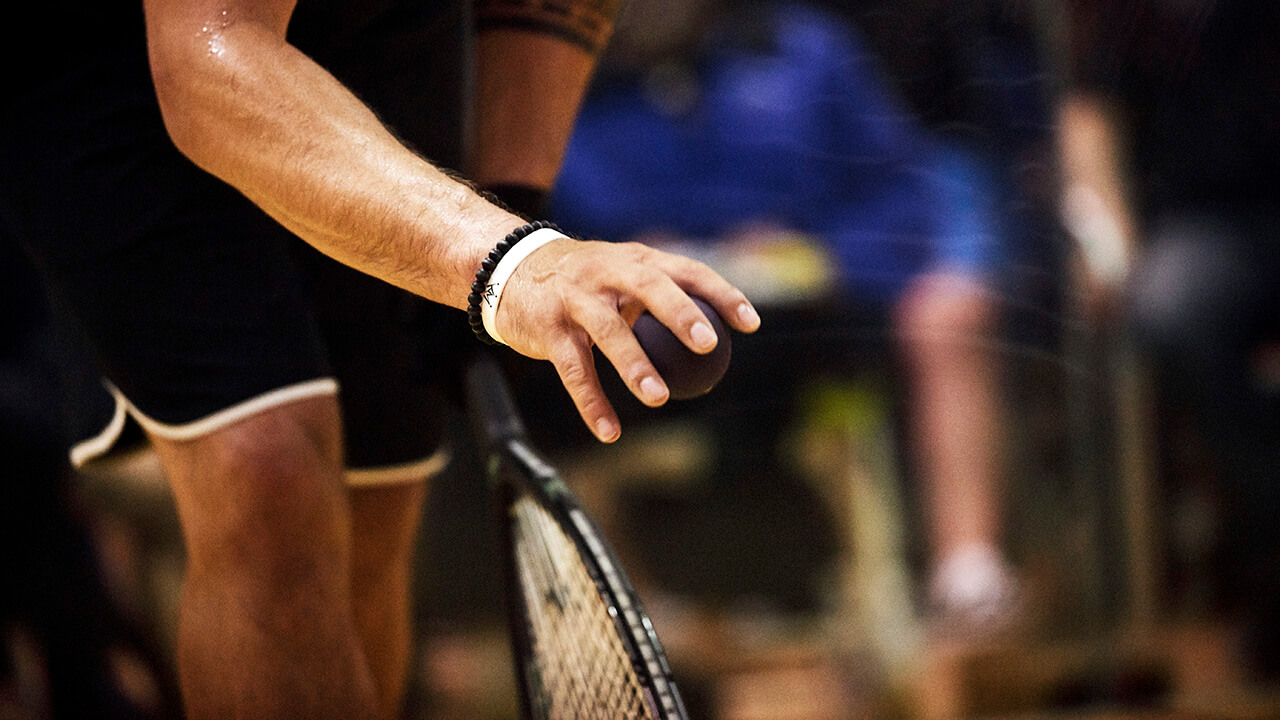
He’s a druggy.
We should take his titles away.
He’s tarnished his name.
News clippings and quotes decorated the walls of Waselenchuk’s home weight room. If anyone in racquetball said something negative about him, he’d print it out and tape it up.
Carson wins in Seattle.
Jack Huzak is World No. 1.
It was in that small room on the top floor of his Austin home that Waselenchuk went to work and focused on getting in the best shape of his life to orchestrate a comeback few thought possible. He’d been banned for two years from any meaningful racquetball matches, both professional and international. The ruling came after a positive drug test following his Canadian nationals win in 2006 at home in Edmonton. Waselenchuk admits he had a few puffs of a joint at a friend’s place during the tournament, but he maintains he doesn’t know how cocaine metabolite got into his system. When the Canadian Centre for Ethics in Sport administered the test, he figured he’d get a warning, like more than 20 athletes before him who’d come back positive for marijuana. Tacking the cocaine metabolite on earned the two-year ban.
Waselenchuk says that was the first time he’d ever been tested for drugs. He says his ‘B’ sample was never found for re-testing. He says the chaperone who watched him pee in a cup had bought him a few drinks a night earlier. And the reason he signed a form acknowledging a two-year ban is because the IRT’s then-commissioner, Dave Negrete, told him it would only affect his status on the international circuit — that he could keep playing on the pro tour. But Negrete was wrong: After three straight seasons at No. 1, Waselenchuk couldn’t play either of the 2006–07 or 2007–08 campaigns. “A lot of those people took two years away from me,” he says. “People I thought were my friends.” He spent $25,000 and more than six months trying to fight the ban with the help of a lawyer. About eight months into his suspension, he stopped fighting. “I disappeared,” he says.
Sponsors had already dropped him. Rumours had it that he was so dominant because he’d been on steroids. Winterton got emails from many in the racquetball world, asking: “Why would you be involved with a druggy?” But he defended Waselenchuk, and still does today. “I believe he got a raw deal,” the coach says. “Once he explained what happened, I said, ‘Okay, I’m not going to quit on you.’”
That decision put Winterton in an exclusive club. “At the time, everybody didn’t want anything to do with me,” Waselenchuk explains. “I lost everything. It was like one day I was the greatest thing in the world, and the next day I couldn’t even get a phone call from anybody.”
Brown was the national team coach and Racquetball Canada’s executive director at the time, and discussing the suspension with him is touchy. While he hasn’t spoken to Waselenchuk since the incident, he will say he and others went to great lengths to prevent a positive drug test. “Our version of events would differ,” Brown says, though he won’t get into his version. “You do everything possible to make sure that your athletes don’t end up in these situations.”
It was Brown who had convinced Waselenchuk to come back and play for the Canadian title in 2006, something Waselenchuk hadn’t done since focusing on his pro career. “Home nationals, the conquering hero,” Brown says. “It was a good story all around.”
The plan was to send Waselenchuk to world championships, where he’d likely have won and boosted not only his profile, but Racquetball Canada’s, too. Brown figures Waselenchuk would’ve been made the poster boy of the sport in this country, like Greenfeld was after his world championship wins — travelling from coast to coast, teaching clinics. “The world would have been his oyster,” Brown says. But all that blew up with his positive drug test.
He has been asked to represent Canada since then. Waselenchuk had a chance to win Pan American gold on home soil in 2015 in Toronto — the highest honour in his sport, since it isn’t on the Olympic program — but he decided not to play. About a year ago, Racquetball Canada’s administrator of high performance, Geri Powell, says she emailed Waselenchuk about competing in the upcoming Pan American Games in Peru, but never heard back. “I’m constantly asked, ‘Why won’t he come play?’” Powell says. “I just tell people to reach out to Kane and ask him. I don’t know. When I didn’t get responses, I assumed he was done with Canada. It could be something’s happened and it brings up bad memories.”
It does bring up bad memories, Waselenchuk says. “Where were you when my suspension was going on?” he asks of Racquetball Canada. “That was the worst thing in the world. No one helped me, no one came to bat for me.”
And so, in purgatory for two years, Waselenchuk went to bat for himself. He lost 40 pounds. He practised twice a day, usually solo. ProKennex, his current sponsor, provided him with racquets when no one else would. “I felt like something so negative, I had to somehow make it positive,” Waselenchuk says. “I can’t dwell on that, because then they win. And I want to win.”
A couple of times a day, he’d sit on the bench in his weight room and look around at all those articles on the wall, the ones calling him a cheater, the ones celebrating his rivals’ wins. He’d even muster a smile. And Waselenchuk would think to himself: “I’m going to prove all you f—ers wrong.”
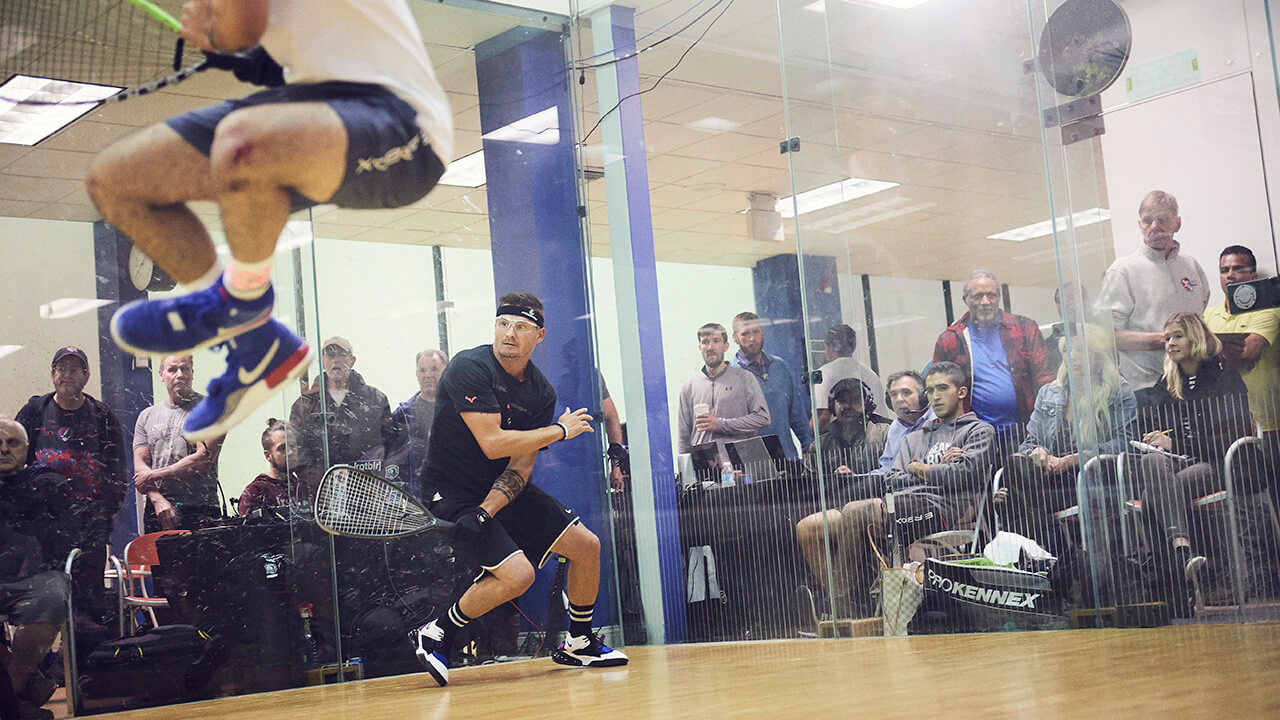
Racquetball’s best ever was an unranked qualifier when he returned to action to kick off the 2008–09 season in Denver. He wore a shirt with a crown logo, which he’d designed during his time off, and bearing the letters: GBWM. Those stood for “Give Back What’s Mine.”
Everything, he felt, had been stripped from him. His No. 1 ranking. Tournament titles that should’ve been his. “GBWM,” he says, now. “A public statement.”
He needed three wins just to get into the main draw. Then he beat the World No. 3 in the quarter-finals, and the world No. 2 in the semi, setting up a match against Carson, the World No. 1. By that last match, Waselenchuk was gassed, running on “100 per cent adrenaline and just 100 per cent hate,” he says. And that fuelled him just fine. “There was no way I was losing that tournament,” he says of a win that wasn’t only for him, but also for the coach who’d stood by him. “I wanted it for us.”
Winterton calls the comeback victory “the greatest performance of will I ever saw.” Waselenchuk would win nine more tournaments that season, losing just once, becoming the first player in tour history to open the season unranked and end it at No. 1. “Back on top,” he says. “And let’s just say I don’t think I ever left after that.”
Since January of 2009, Waselenchuk has lost three times in matches that didn’t end due to injury forfeit. He went a full season without losing a single game. In better years for the sport, like 2011, he made some $300,000 between sponsorships, purse money and appearance fees. But the money has since declined, and the father of two young girls admits he has trouble paying his bills sometimes. This week on Long Island, he figures his expenses amount to about $1,300, so if he wins, he’ll net a little more than $2,000. That brings his season’s total prize money to around $40,000.
Waselenchuk came into this season-ending Syosset event in a unique position, at least for him. The previous tournament, in Florida, he lost in the quarter-final — the racquetball world was shocked, and Winterton’s phone blew up with questions. As soon as Waselenchuk loses, people are quick to declare that he’s done. He revels in it. “It’s funny because the motivation doesn’t come from myself anymore, really,” Waselenchuk explains. “I love people that doubt me.”
The doubters are increasing as he ages, too. Like Federer, Waselenchuk is 37, and so he faces the same questions as the Swiss star, with many wondering when racquetball’s top dog will slow down. Winterton laughs at that. He swears Waselenchuk has come back better every year he’s coached him. Winterton doesn’t know exactly how, but he makes the right adjustments every off-season. “He’s changed the game forever,” the coach says.
Winterton hopes Waselenchuk plays for Canada again one day, and he figures he will. Waselenchuk’s sense of nationalism is still very strong. Every time he wins the U.S. Open, he begs the tournament organizers to play “O Canada” instead of “The Star-Spangled Banner.” After win No. 11, “O Canada” blared over the speakers for the first time. “They finally played it,” Waselenchuk says, looking down at his sneakers. His voice shakes and his eyes glass over. “I’ve never forgotten where I came from.”
Still, The King has yet to commit to a national-team return. “I would like to,” Waselenchuk says, but adds he has “certain feelings towards certain people” at Racquetball Canada. “I would like to,” he repeats.
What’s certain about the future in racquetball, according to IRT co-owner Mark Gibbs, is a few more tournament stops next season, up from nine this past year, and greater accompanying purse money. Waselenchuk has made even bigger asks recently, for travel compensation and the like, especially since event organizers and sponsors tell him they won’t host a tournament at all if he doesn’t play. “I’ve already built my own value and they’re [ascribing] value to me,” Kane says, “so why shouldn’t I be compensated for that?”
For years, he was quiet about the lack of promotion on Tour and the lack of recognition for the world’s best. But at the end of the 2017–18 season, he raised his voice: Waselenchuk threatened — but pulled himself back from — retirement because of a personal dispute with the former head of the IRT, who he felt wasn’t valuing him as the top player on Tour. And now, with the sport struggling to draw fans and funding, Waselenchuk feels it’s his duty to speak up more than ever. “If I don’t voice my opinion and then all this goes to shambles and goes to shit, I’m going to feel bad about it,” he says. “I reached a certain point a couple years ago where I refuse to be the greatest player ever to play in the demise of a sport.”
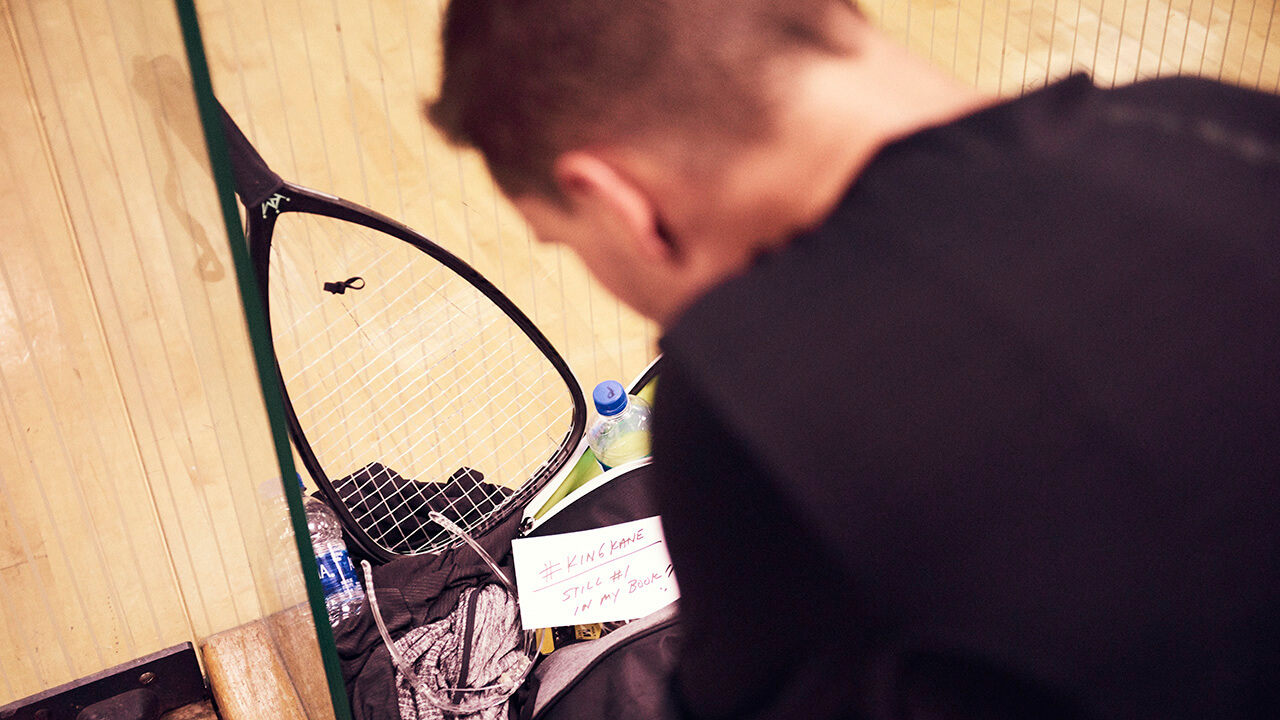
Back in the Syosset Fish Bowl, Waselenchuk has regained serve against Carson, still down 0–2. A backhand winner gets him on the board. Another follows to tie things up. There’s a back-and-forth as Carson and Waselenchuk gain and lose their respective serves, and then the back-and-forth comes to an end.
A kill. A soft drop shot. An ace. A flatty (a shot that dies at the front wall). “What a shot from the knees!” says Dean Baer, the tournament director and play-by-play voice of the game’s live Facebook stream. A wide-angle pass makes it 11–3. He takes the first game 15–3.
Halfway through Game 2, Carson’s frustration starts to show. “One break!” he yells. “Just one break. Let’s go!” Waselenchuk responds with an ace. “It’s very hard to stop the Kane train once it’s left the station, to be honest,” Baer says. Then comes another ace to make it 9–3.
The match is over in just 39 minutes, and it ends 15–3, 15–4. On a nearby court, a doubles match has just eclipsed two hours. Carson and Waselenchuk hug, and then The King sits in his courtside seat, grinning, staring ahead into the Fish Bowl with a towel around his neck. He’s No. 1 for a 13th time. “It still hasn’t sunk in yet,” he says.
The off-season starts now, and just after the 2019–20 campaign kicks off in the fall, he’ll turn 38. The plan is the same as it always is: To come back better than he was the year before, to kick off the season with a win at the US Open, which would be his 15th. “I’m not really content with where I’m at,” Waselenchuk says. “I still have that fire.”
It’ll be another 20 minutes before he gets to the parking lot, after all the signatures and selfies and a chat with a little boy who asks if he’s “magic,” which makes Waselenchuk laugh. Later, an older man approaches for a photo. “You gave him no chance,” he says, shaking his head. “Keep doing it, man. We watch every match you play. You are the game.”
Waselenchuk will always be the game, no matter what happens to it from here.
Edited and designed by Craig Battle

